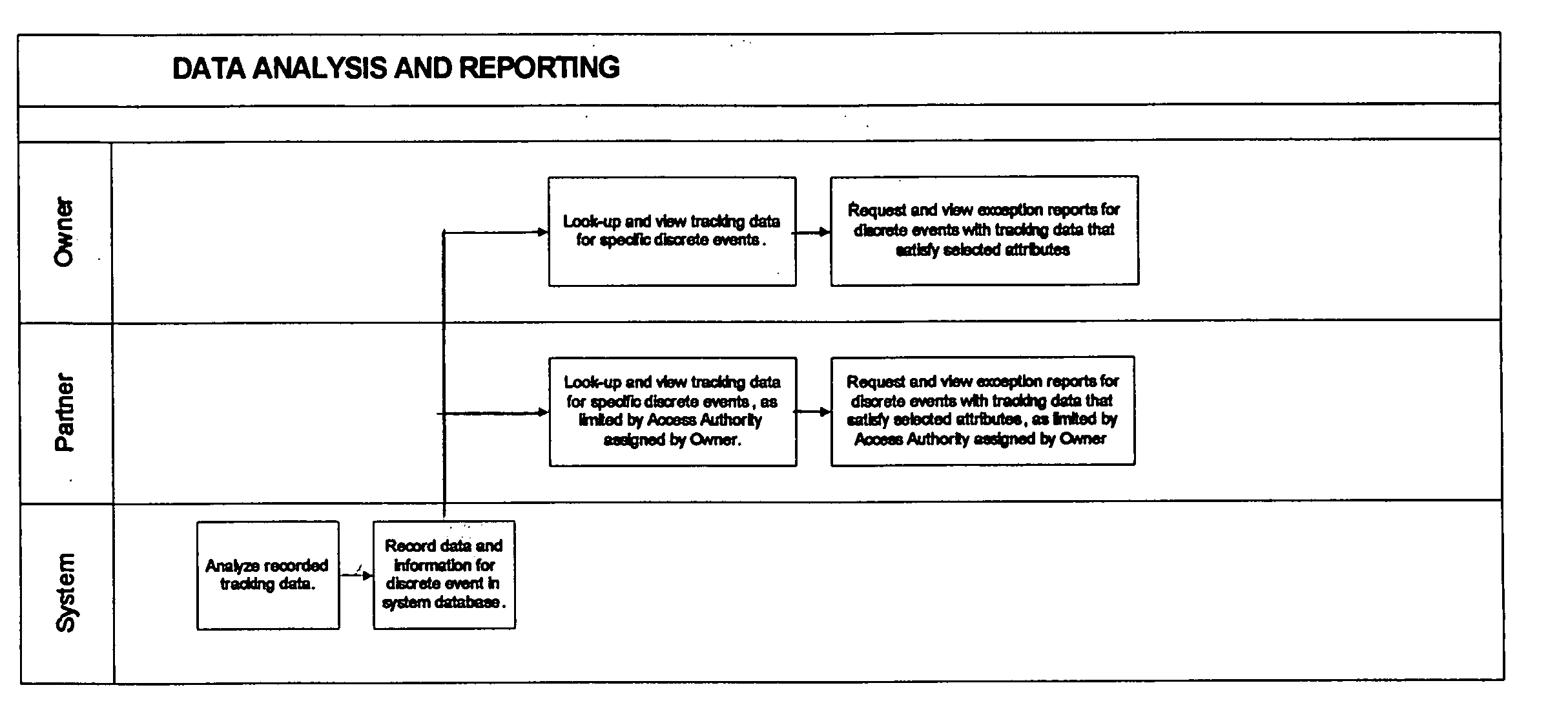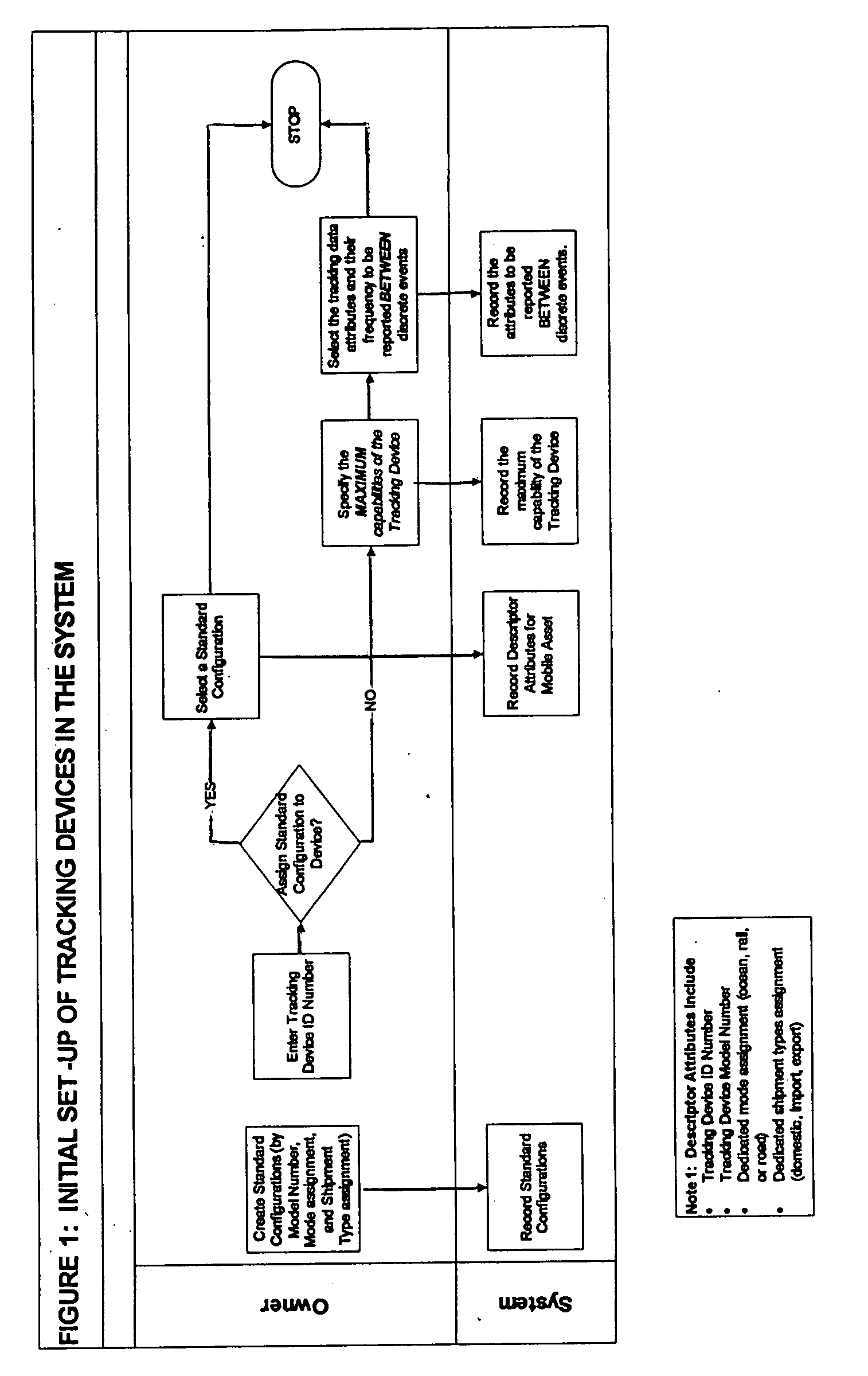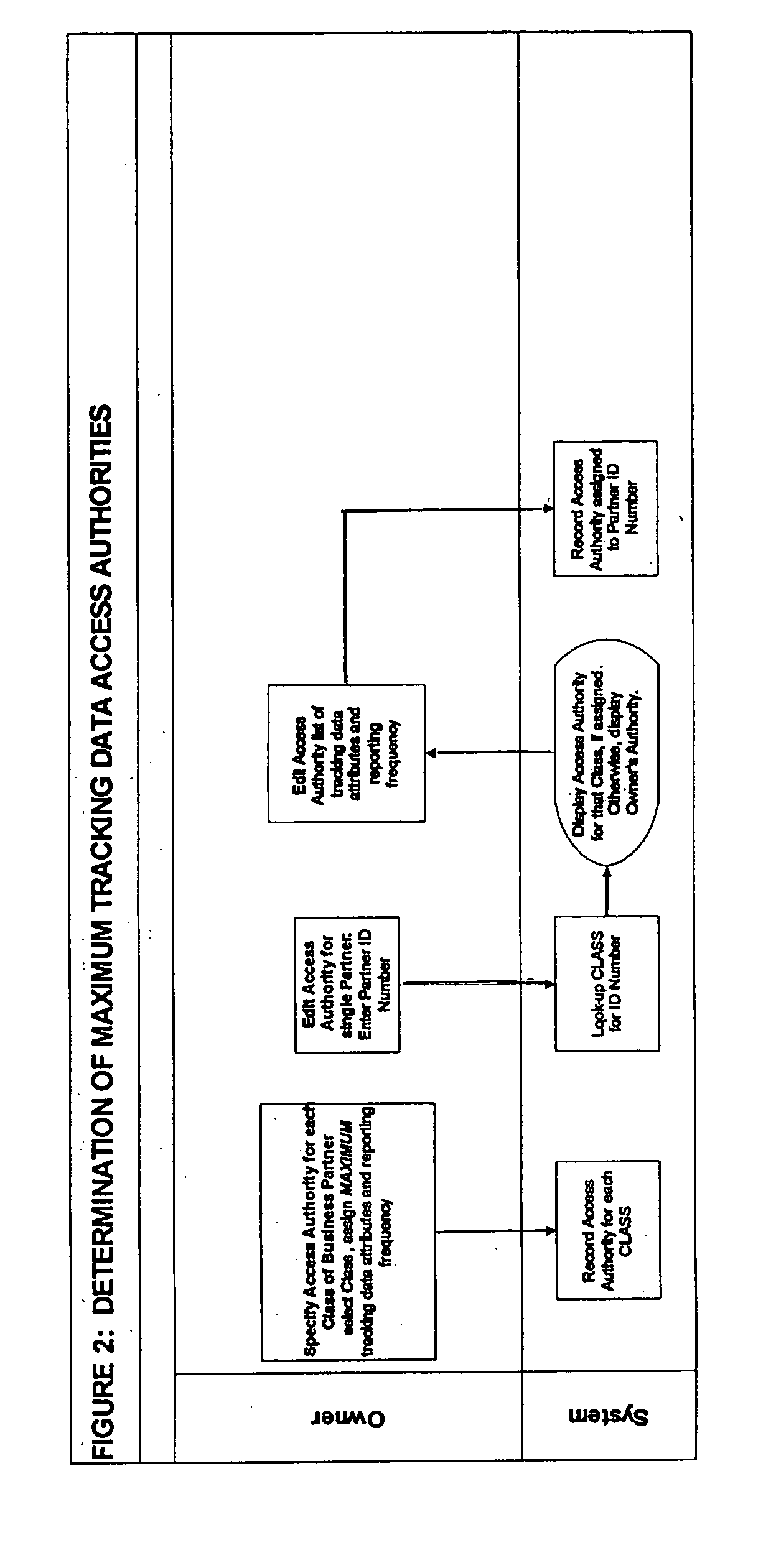System and method for effectuating the acquisition and distribution of tracking data on mobile assets, including shipment containers used in freight transportation
a tracking data and mobile asset technology, applied in the field of collaborative planning and reporting of tracking data, can solve the problems of reducing the likelihood of recovering the trailer before, affecting the efficiency affecting the accuracy of tracking data acquisition, so as to achieve the effect of reducing the amount of data and information reported
- Summary
- Abstract
- Description
- Claims
- Application Information
AI Technical Summary
Benefits of technology
Problems solved by technology
Method used
Image
Examples
Embodiment Construction
[0030] A party that owns, leases, or otherwise controls mobile assets (“Owner”) and desires to utilize the present invention to facilitate the optimum configuration of the electronic tracking devices on their mobile assets and to distribute the tracking data and information acquired from these tracking devices first sets-up each device in the system by specifying descriptor attributes that enumerate the identification information and intended use of each device. The Owner then specifies the capabilities of each tracking device by entering the maximum tracking data attributes and frequency that the tracking device is capable of reporting. The Owner can specify a less extensive list of tracking data attributes and frequency to be reported by the device between discrete events when only the Owner needs to know the tracking data for the mobile asset. This extends the life of the battery and reduces the cost of maintaining each tracking device. Some tracking devices can be manually pre-c...
PUM
 Login to View More
Login to View More Abstract
Description
Claims
Application Information
 Login to View More
Login to View More - R&D
- Intellectual Property
- Life Sciences
- Materials
- Tech Scout
- Unparalleled Data Quality
- Higher Quality Content
- 60% Fewer Hallucinations
Browse by: Latest US Patents, China's latest patents, Technical Efficacy Thesaurus, Application Domain, Technology Topic, Popular Technical Reports.
© 2025 PatSnap. All rights reserved.Legal|Privacy policy|Modern Slavery Act Transparency Statement|Sitemap|About US| Contact US: help@patsnap.com



